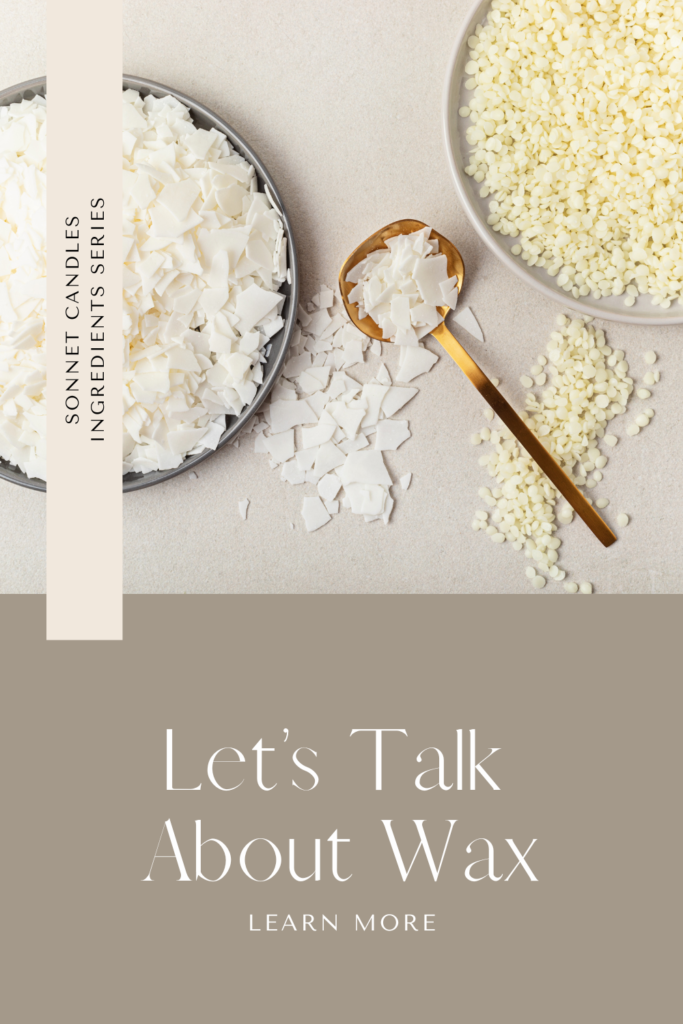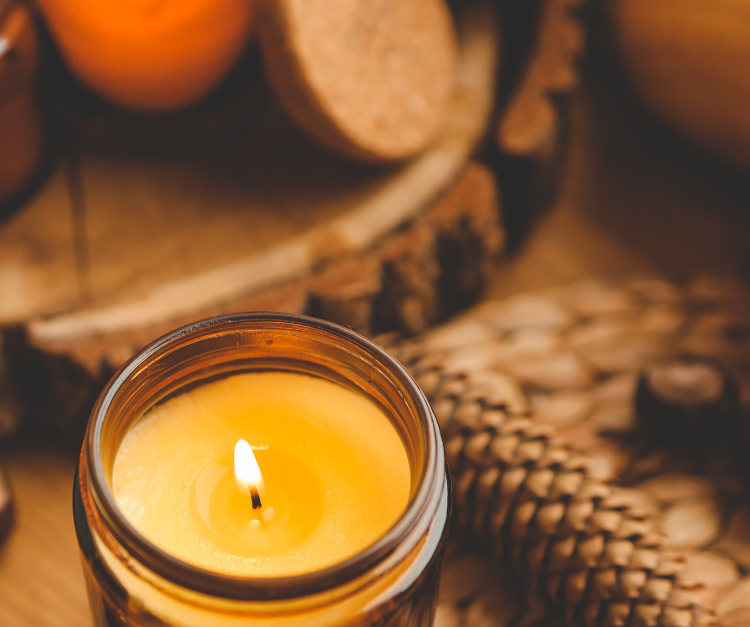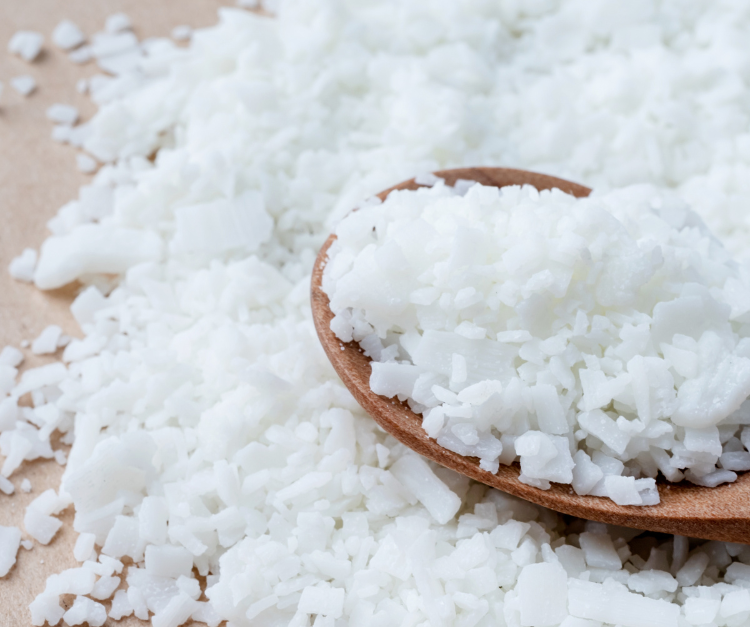
When it comes to candle making, the type of wax that is chosen all comes down to preference. For Sonnet, my preference is coconut soy wax. The next post in the ingredient series is all about wax. Because there is a wide variety of waxes that can be used for candle making I’m breaking this post into two parts. Starting with the more common waxes used in candle making.
Before I talk wax I should also share that some of the key factors in choosing a wax is the following
- Burn Time – how long the candle burns
- Scent Throw – how well does the candle give off scent
- Overall candle performance – does it burn evenly without a lot of issues or soot
#1 Paraffin Wax
This wax is the most commonly used wax for candle making and is often the wax used to make a lot of the candles in the big box stores and popular chains we’re all familiar with. Paraffin is the byproduct of petroleum refining and is often used because it has a good scent throw.
Benefits
- Cost effective – this wax is easy to find and isn’t costly.
- Good Scent throw – It holds and releases fragrance very well and is often blended with other candle waxes for this reason.
- Versatility – can be used in various types of candles from jars candles, as pillars, votives just to name a few.
Disadvantages
- Not Sustainable – since paraffin is a byproduct of petroleum, it’s not sustainable or environmentally friendly.
- Potential toxins – when burned it can release harmful chemicals.
There is a lot of debate around paraffin wax and whether or not it’s good for candles or not. There are people who believe paraffin has gotten a bad rap and isn’t as bad as the claims that have been made. While others would disagree and say that candles made with paraffin are harmful. Most of us at some point and time have burned a candle with paraffin. For me, it’s a wax I steer clear of because of my own sensitivities but advise that you do more research on this wax to learn more.
#2 Soy Wax
Soy wax is a natural wax may from soybean oil. This wax has gained popularity because of its sustainable benefits and clean burn. Because of its popularity a lot of big retailers have started to use soy wax, but it’s often blended with paraffin. The drawback to this is as a regular consumer you won’t know what the breakdown of that blend. It could be 90% Soy and 10% Paraffin or 60% Soy and 40% Paraffin and because these blends are proprietary, no one will really know the make up of a soy blend wax.
Benefits
- Natural & Renewable
- Clean Burning — that it produces less soot compared to paraffin candles
- Longer burn time
- Environmentally friendly
Disadvantages
- Soy candles can often do something called Frosting. Meaning that over time, the candle can develop a frosted appearance which could be viewed as unappealing but with a natural wax, there are a lot of characteristics to the wax that show its authenticity.
- Weak Scent Throw – While Soy can have a lighter scent throw to paraffin. This can be remedied with the amount of fragrance used and cure time.
- Expensive. This was cost more than paraffin.
#3 Coconut Wax
Coconut wax is a new wax to candle making. It’s also becoming a popular alternative to Soy or Paraffin waxes. Coconut wax is made from hydrogenated coconut oil. Since it’s a new wax to the candle making scene, here are a few of it’s benefits.
Benefits
- Eco-friendly – made from a renewable resource
- Great Scent Throw – holds fragrance really well making it great for candles
- Clean burning – there is minimal soot
- Softer texture – it’s easier to work with and blends well with other waxes
Disadvantages
- Expensive – like most natural waxes it can be a pricier wax to use
- Availability – it’s not a wax that can be easily found like soy or paraffin but with is growing popularity this is starting to change.
These three waxes are the most common waxes that candle makers use but they’re not the only waxes that have been used for candle making. Here are a couple of those waxes.
Beeswax
This is a natural wax produced by honeybees and has been used for centuries, it’s got a good quality burn and a nice natural scent. Like soy and coconut wax, beeswax is all natural and sustainable. It emits negative ions when burned that can purify the air and has a long burn time. This wax can be expensive and isn’t available as easily as paraffin or soy wax. Because of this wax high melting point, it makes it not as ideal for candle making.
Palm Wax
Derived from palm oil it can create visually appealing candles with a crystalline or feathered texture. It can make hard and durable candles that is perfect for pillar or tapper candles. Palm wax can be renewable but that is all in how it’s sourced. How this wax is sourced is one of the biggest drawbacks to this wax. Unsustainable palm oil production creates environmental concerns because it can lead to deforestation and destroy habitats.
While paraffin, soy and coconut are the most common waxes used in candle making, there is a new batch of blends that have won the hearts of a lot of candle makers. Next week I’ll talk all about those blends. If you have any questions about the waxes I’ve shared leave me a comment.



